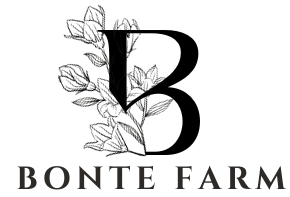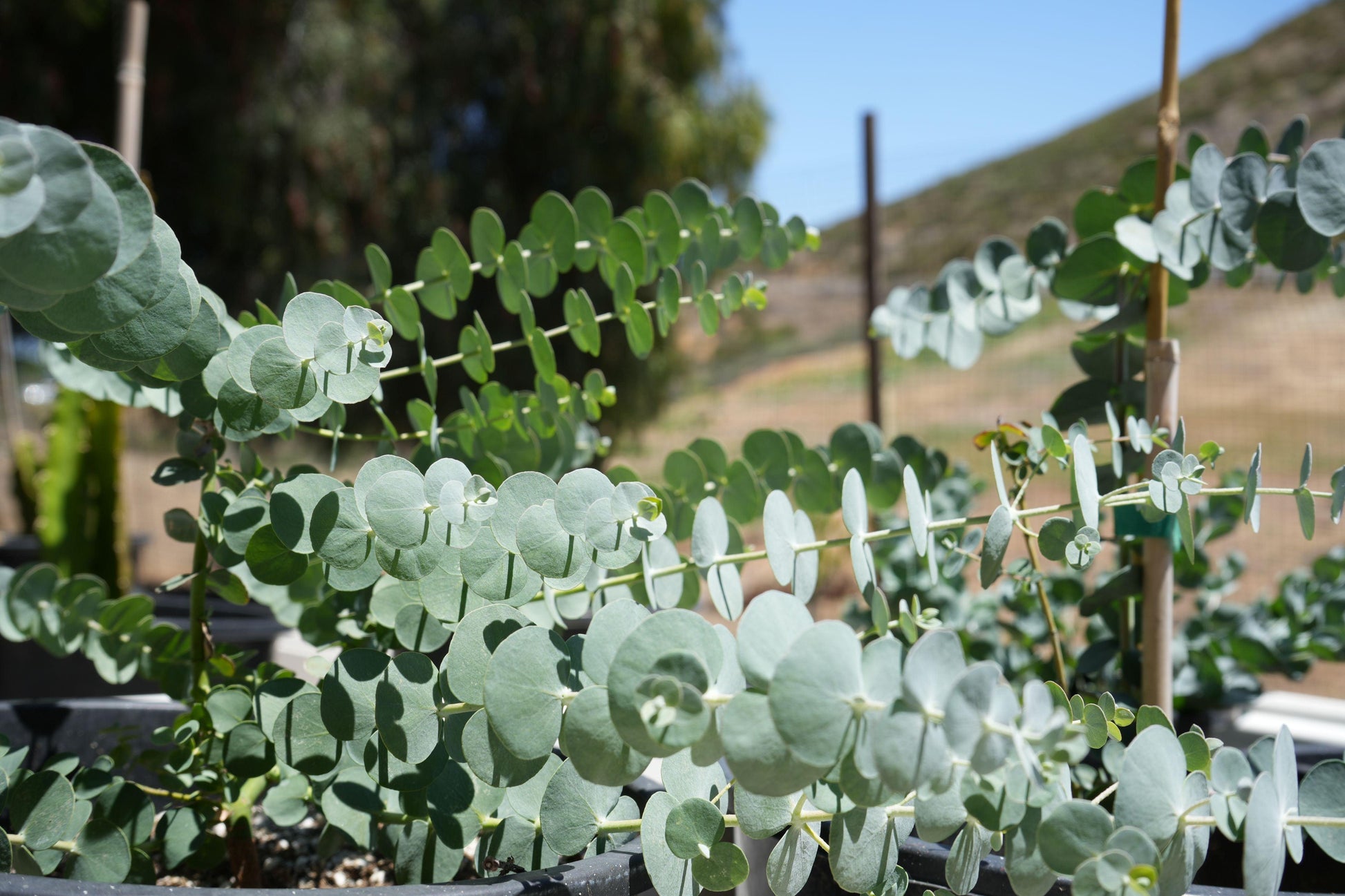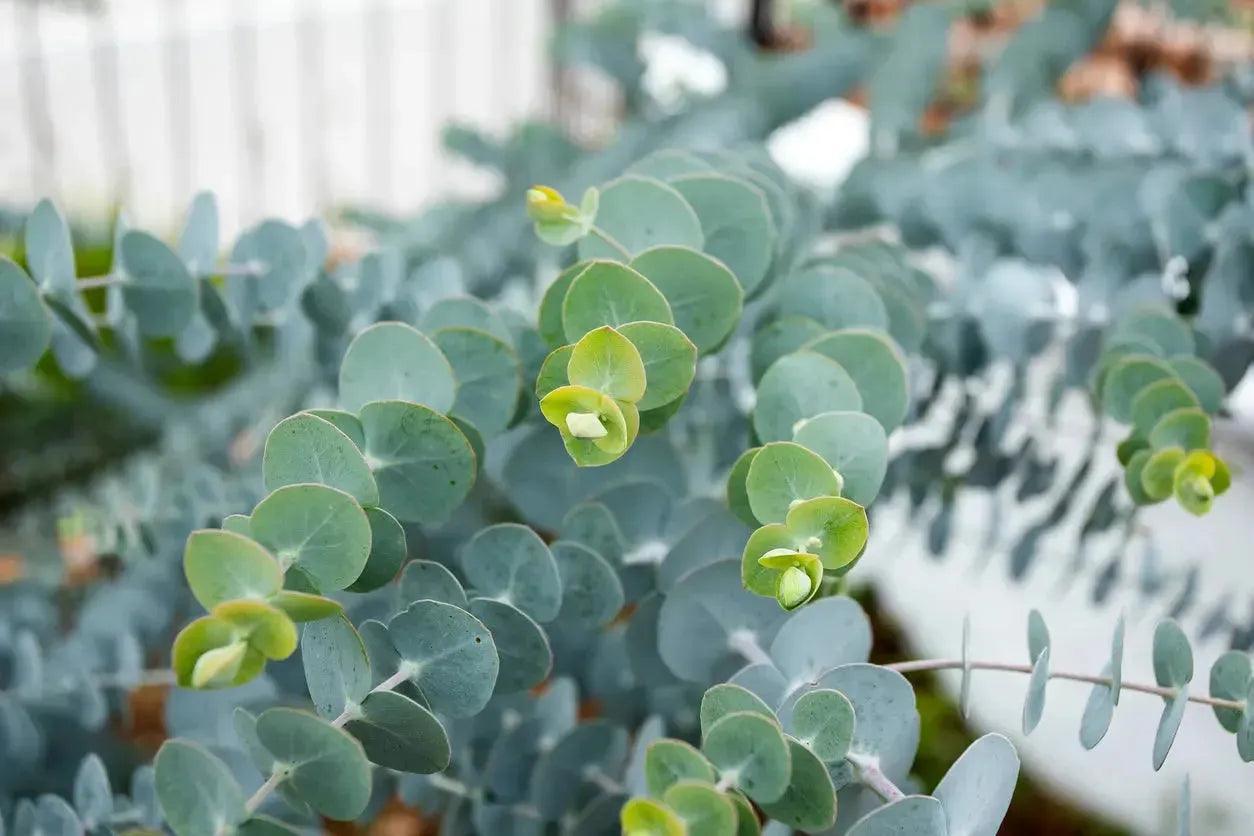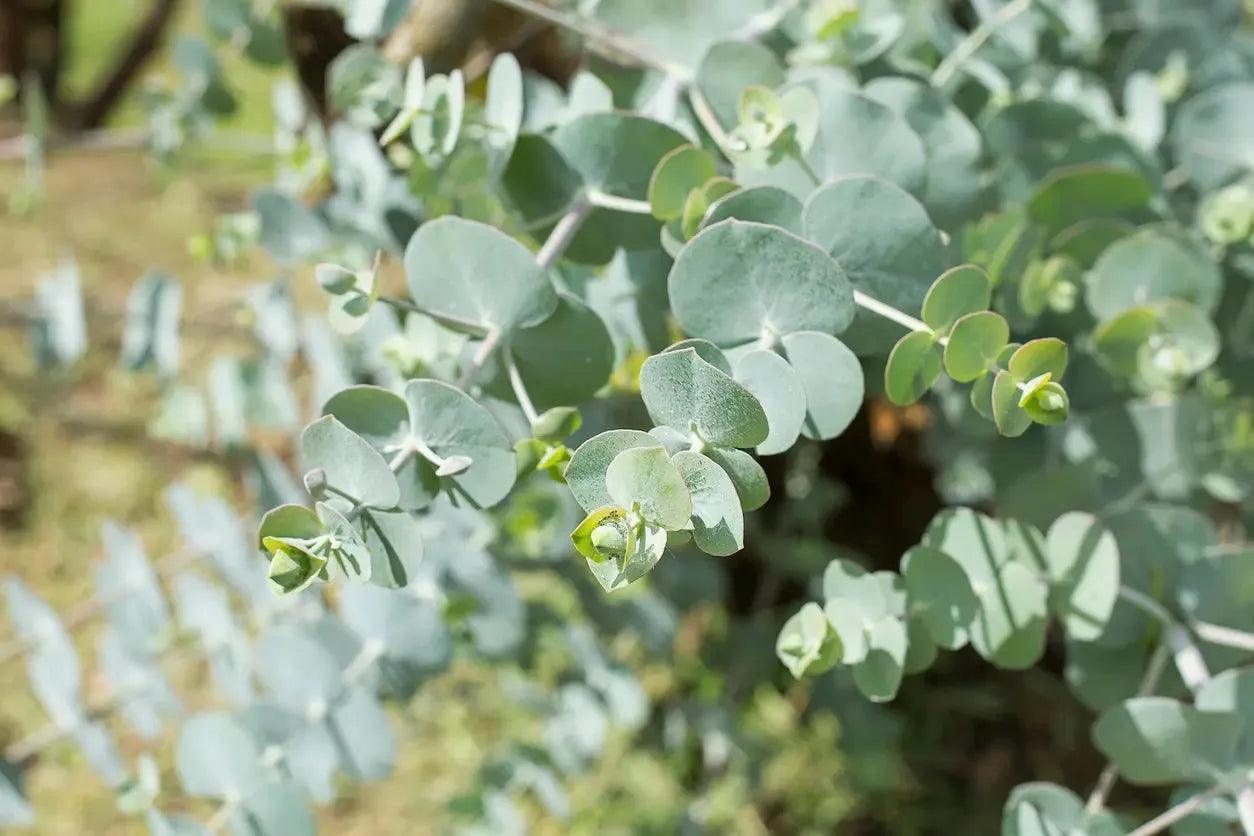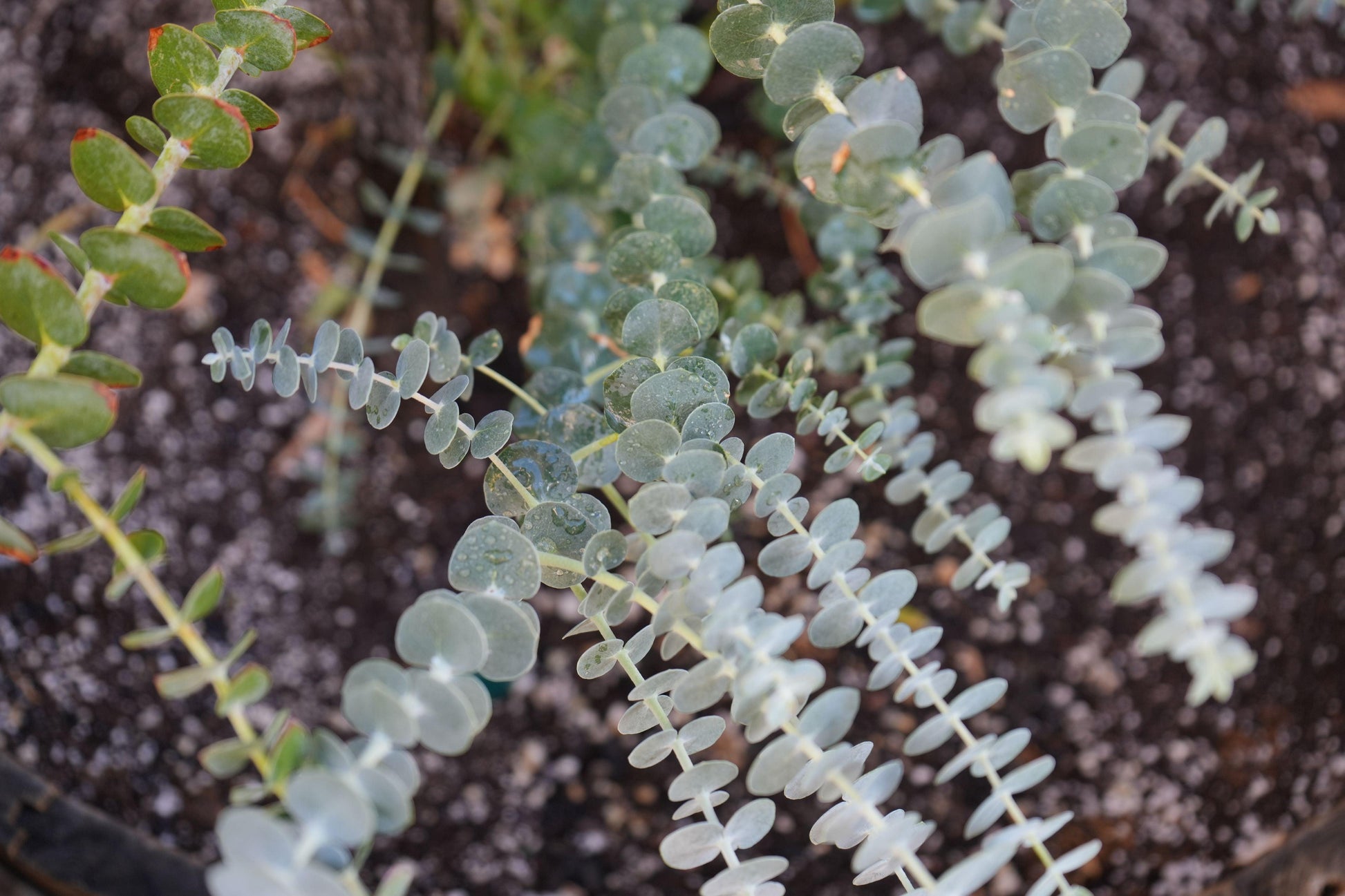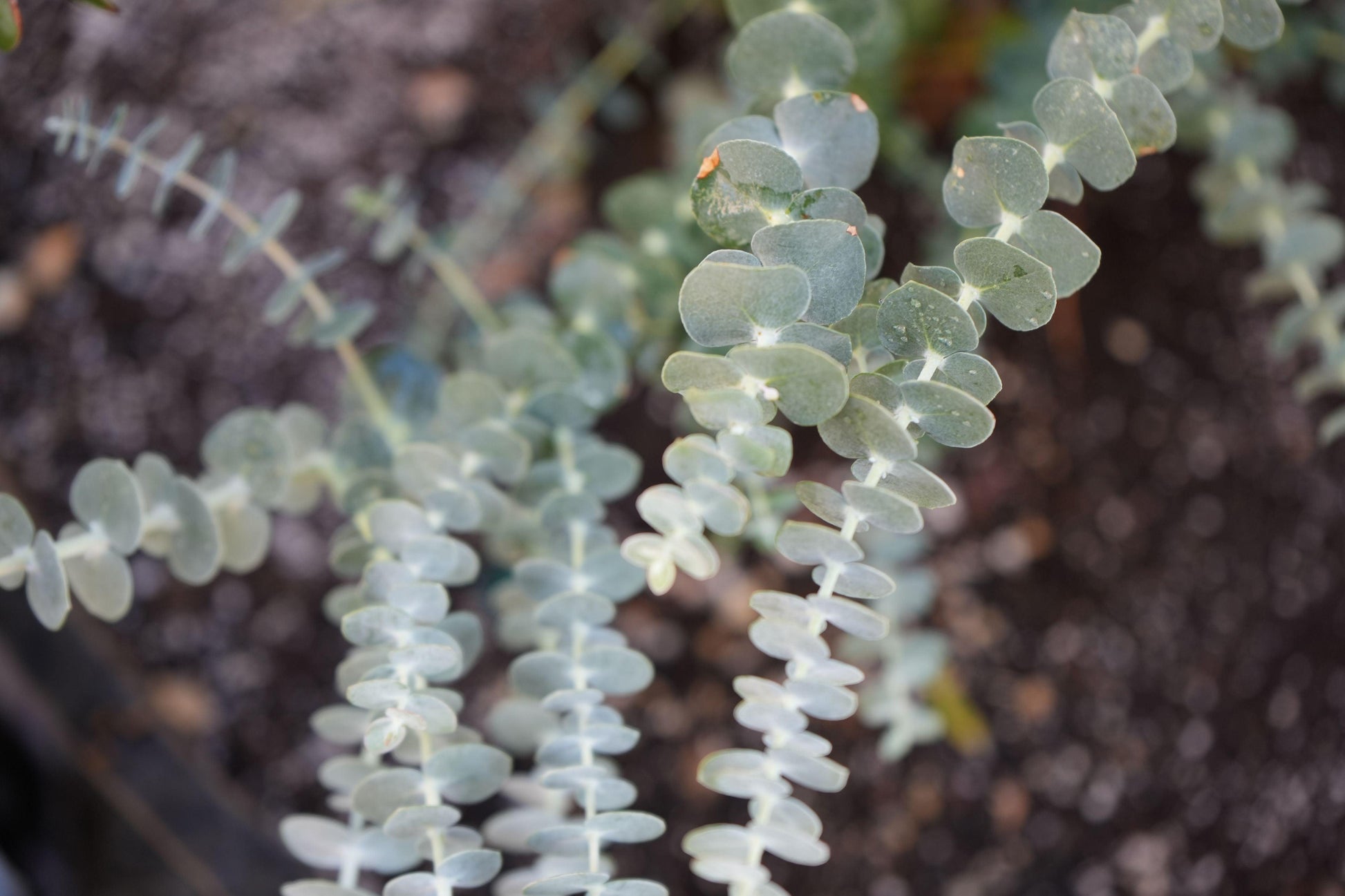Bonte Farm
Eucalyptus 'Baby Blue': blue-green foliage and delicate white flowers
Eucalyptus 'Baby Blue': blue-green foliage and delicate white flowers
Couldn't load pickup availability
Eucalyptus 'Baby Blue': A Silvery-Blue Delight
Eucalyptus 'Baby Blue' is a captivating small tree or large shrub admired for its distinctive rounded, silvery-blue juvenile foliage, which it retains throughout its life. Unlike many Eucalyptus varieties that transition to elongated adult leaves, 'Baby Blue' maintains its charming, rounded shape, making it a highly sought-after ornamental choice for gardens and landscapes. While it produces small, fluffy white flowers, its primary appeal lies in its stunning, year-round foliage.
Year-Round Silvery-Blue Beauty
- Persistent Juvenile Foliage: Showcases captivating rounded, silvery-blue leaves that are retained throughout the plant's life. This unique characteristic distinguishes it from other Eucalyptus species, providing continuous visual interest and a soft, appealing texture.
- Delicate White Flowers: Produces small, fluffy white flowers, typically in late winter or early spring. While not as prominent as the foliage, these delicate blooms add a subtle touch of beauty and attract pollinators.
Botanical Characteristics:
- Scientific Name: Eucalyptus pulverulenta 'Baby Blue' (often sold simply as Eucalyptus 'Baby Blue')
- Common Name: Baby Blue Eucalyptus, Silver-leaved Mountain Gum 'Baby Blue'
- Growth Habit: Small tree or large shrub with an upright, spreading habit. Can be pruned to maintain a desired size and shape.
- Foliage: Rounded, silvery-blue juvenile leaves retained at maturity.
- Mature Size: Typically reaches 15-25 feet (4.5-7.5 meters) tall and 10-15 feet (3-4.5 meters) wide, but can be pruned to maintain a smaller size if desired.
- USDA Hardiness Zones: 8-11. Best suited to areas with mild winters and dry summers.
Cultivation and Care:
- Sunlight: Thrives in full sun (at least 6 hours per day) for optimal growth and the most vibrant foliage color.
- Soil: Requires well-drained soil. Like most Eucalyptus, 'Baby Blue' is susceptible to root rot in poorly draining soils. Sandy or loamy soils are ideal. Avoid heavy clay soils or amend them extensively with coarse sand, gravel, and organic matter to improve drainage.
- Water: Drought-tolerant once established. Water regularly during establishment and during extended dry periods, but avoid overwatering. Allow the soil to dry out between waterings.
- Fertilizer: Generally does not require fertilization. Over-fertilizing can lead to excessive growth and weaker wood. If necessary, use a low-phosphorus native plant fertilizer sparingly in spring.
- Temperature: Prefers mild to warm temperatures and tolerates light frost once established. Young plants are more susceptible to frost damage and may benefit from protection during their first few winters.
Landscape Use:
- Specimen Tree/Shrub: Use as a stunning focal point in gardens and landscapes, creating a unique visual impact with its striking silvery-blue foliage.
- Screening: Can be used as a screen or informal hedge, providing privacy and visual interest. Its open growth habit allows for dappled light to filter through.
- Cut Foliage: The long-lasting foliage is highly valued for cut flower arrangements, wreaths, and other floral crafts. It adds a touch of elegance and texture to any arrangement.
- Container Plant (Initially): Can be grown in large containers, especially while young, but eventually, it will need to be planted in the ground to reach its full potential. Container growing allows for flexibility in colder climates, where it can be brought indoors during winter.
Wildlife Attraction:
- Pollinators: The flowers attract bees and other pollinators, providing a valuable food source.
- Habitat: Provides shelter and nesting sites for various bird species.
Pest and Disease Resistance:
Generally resistant to most pests and diseases when grown in well-drained conditions. Root rot is the primary concern, especially in poorly draining soils. Good drainage and proper watering practices are essential for preventing root rot. Some minor insect pests may occasionally be present but rarely cause significant damage.
Propagation:
Typically propagated by cuttings. Cuttings are best taken in late spring or summer from semi-hardwood growth. Propagation from seed is possible but less reliable for maintaining the desired 'Baby Blue' characteristics.
Incorporating Eucalyptus 'Baby Blue' into Your Landscape:
When designing your landscape, consider the following tips:
- Spacing: Allow ample space for its mature size when planting to avoid overcrowding and ensure good air circulation.
- Pruning: Pruning is generally not necessary, but light pruning can be done to maintain shape or control size. Prune after flowering.
- Soil Amendment: Ensure excellent drainage by amending heavy clay soils with coarse sand, gravel, and organic matter.
- Avoid Overwatering: This is crucial for preventing root rot, especially in heavier soils.
Relevant Plants: Eucalyptus 'Baby Blue', Baby Blue Eucalyptus, Silver-leaved Mountain Gum 'Baby Blue', blue foliage, silver foliage, Australian native plants, drought-tolerant plants, low-maintenance plants, evergreen tree, evergreen shrub, cut foliage, floral arrangements, USDA zone 8, USDA zone 9, USDA zone 10, USDA zone 11, specimen tree, screening, container plant, rounded leaves, juvenile foliage, ornamental eucalyptus.
Share

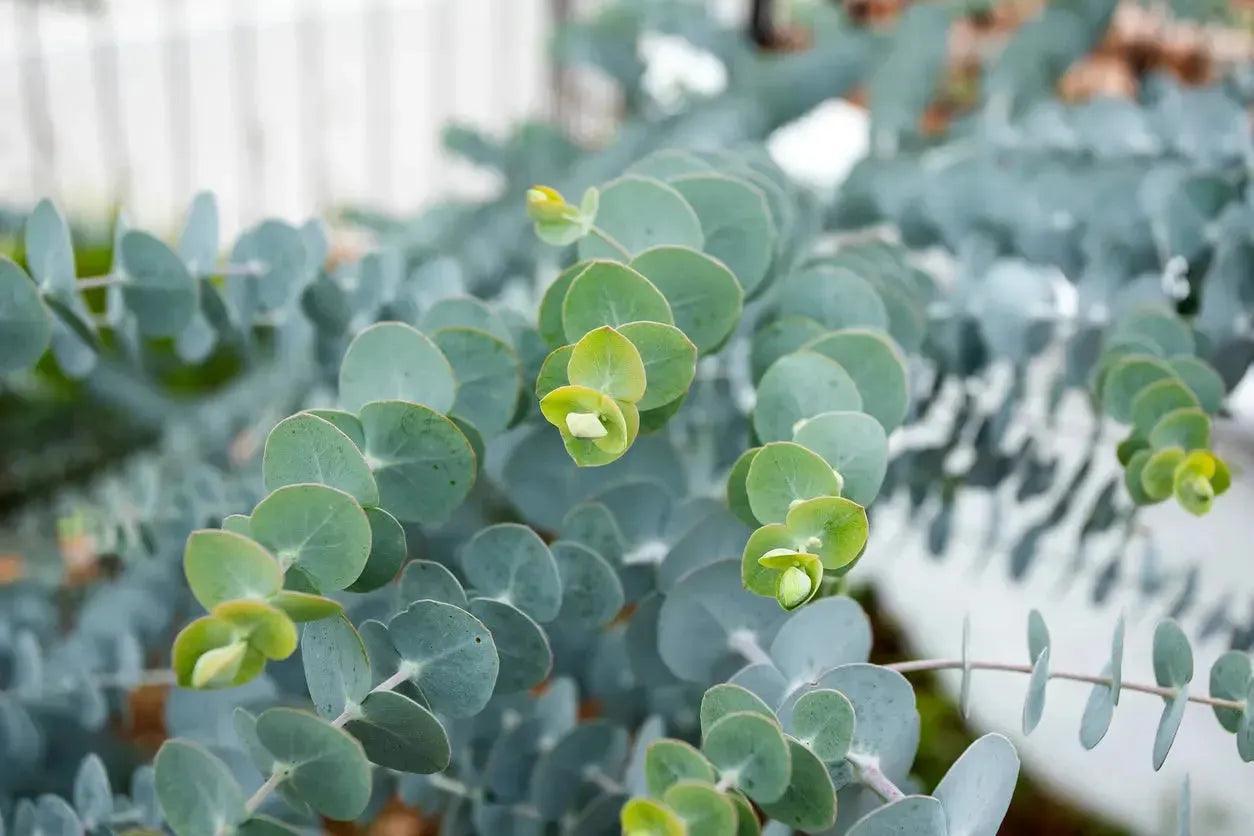
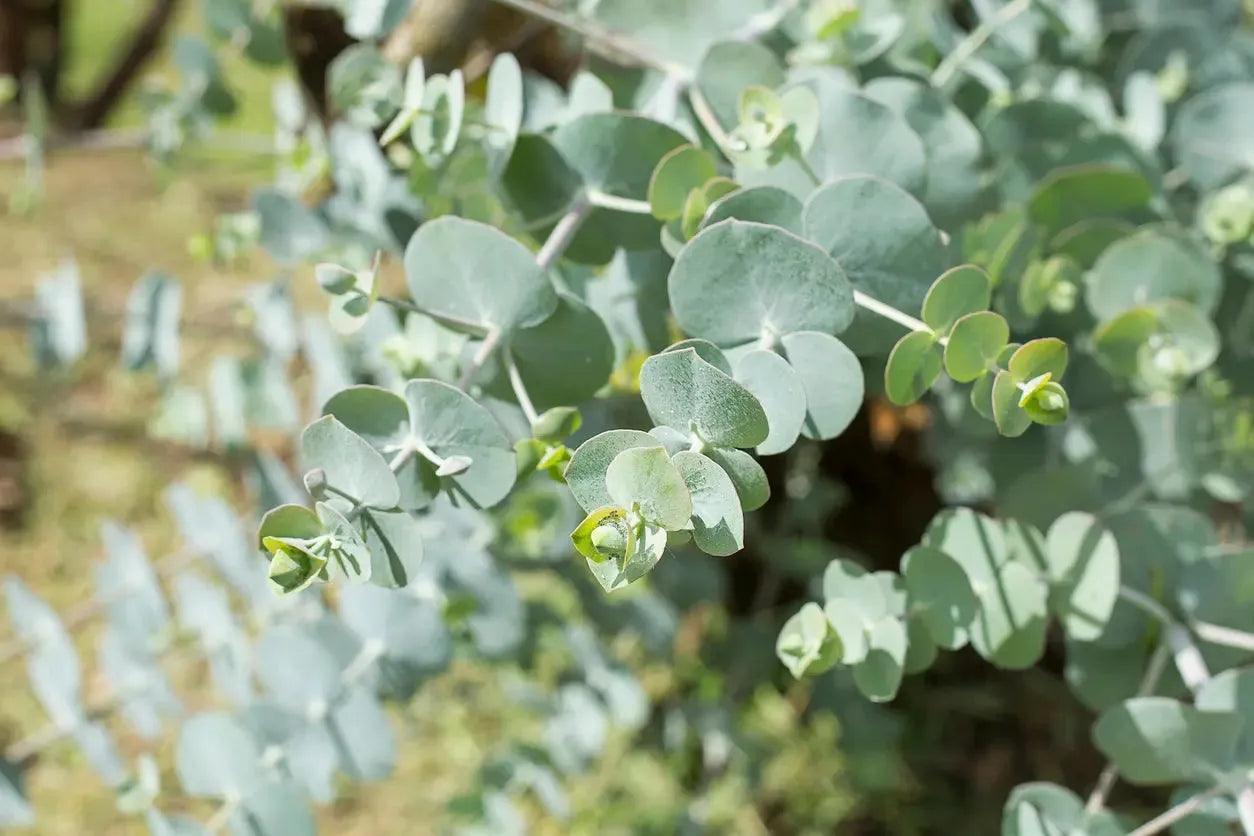
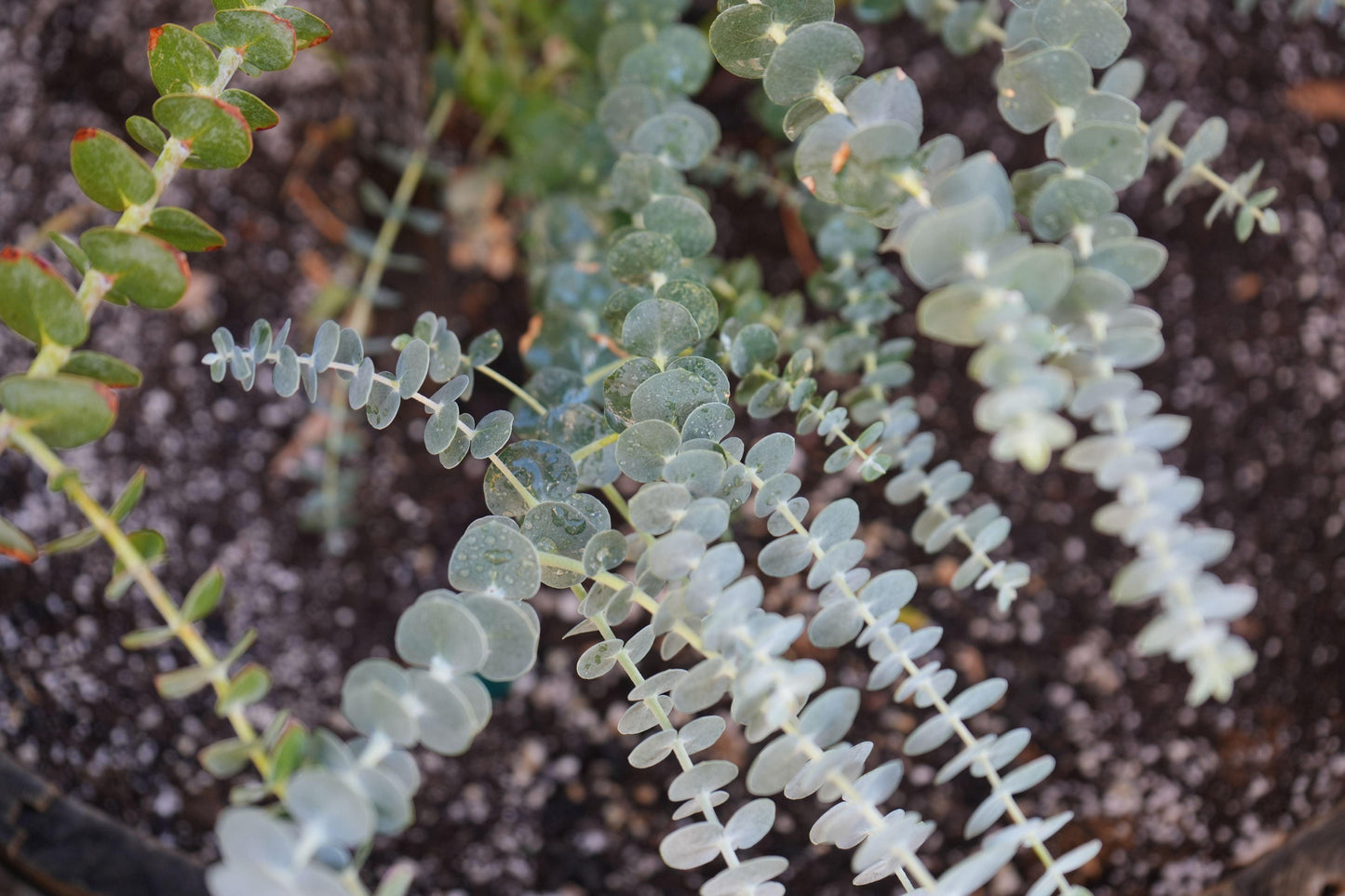
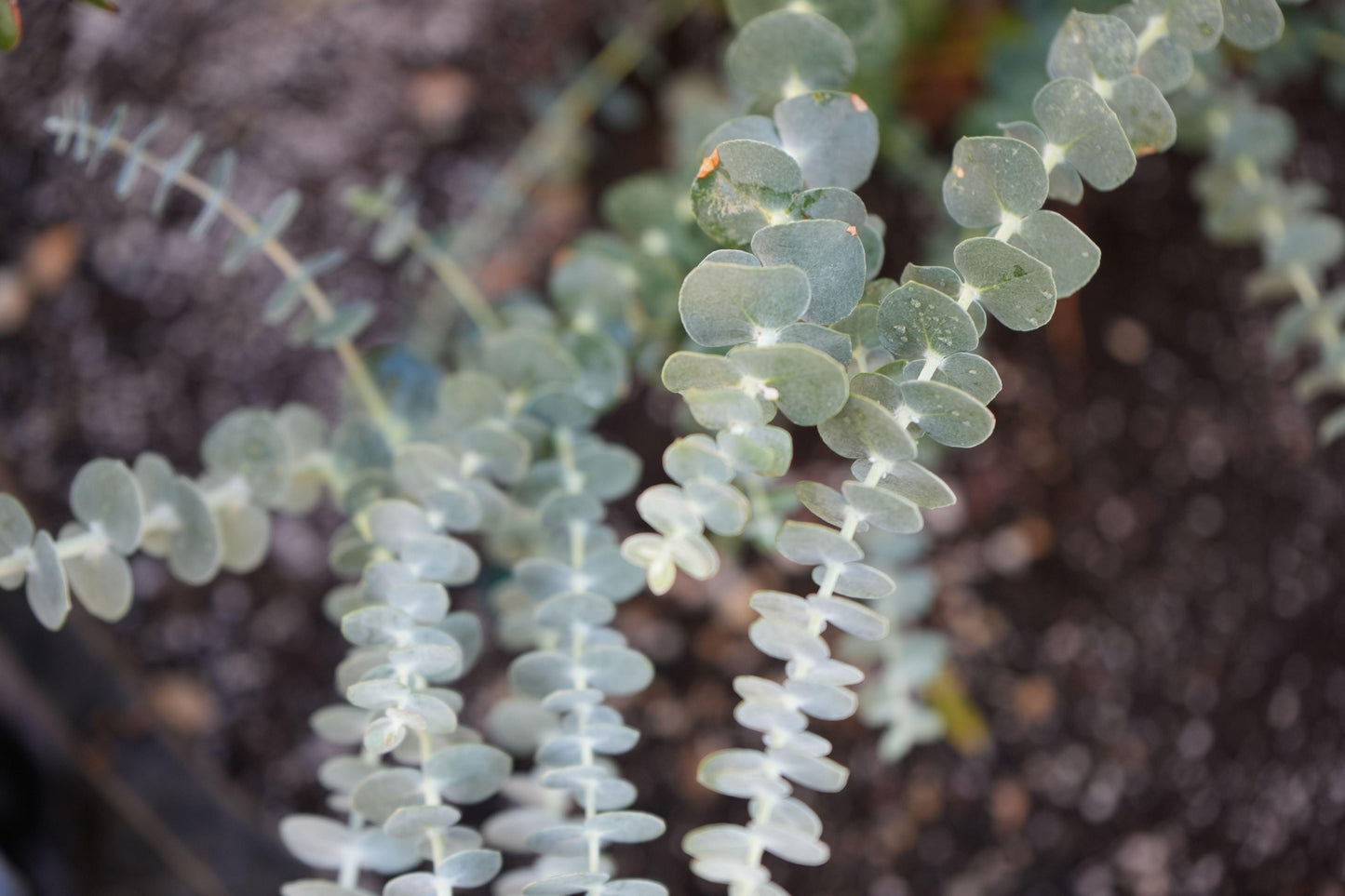
FAQs
Got a question? We are here to answer
